How to get rid of creeping Charlie – 6 tips for tackling ground ivy in your garden
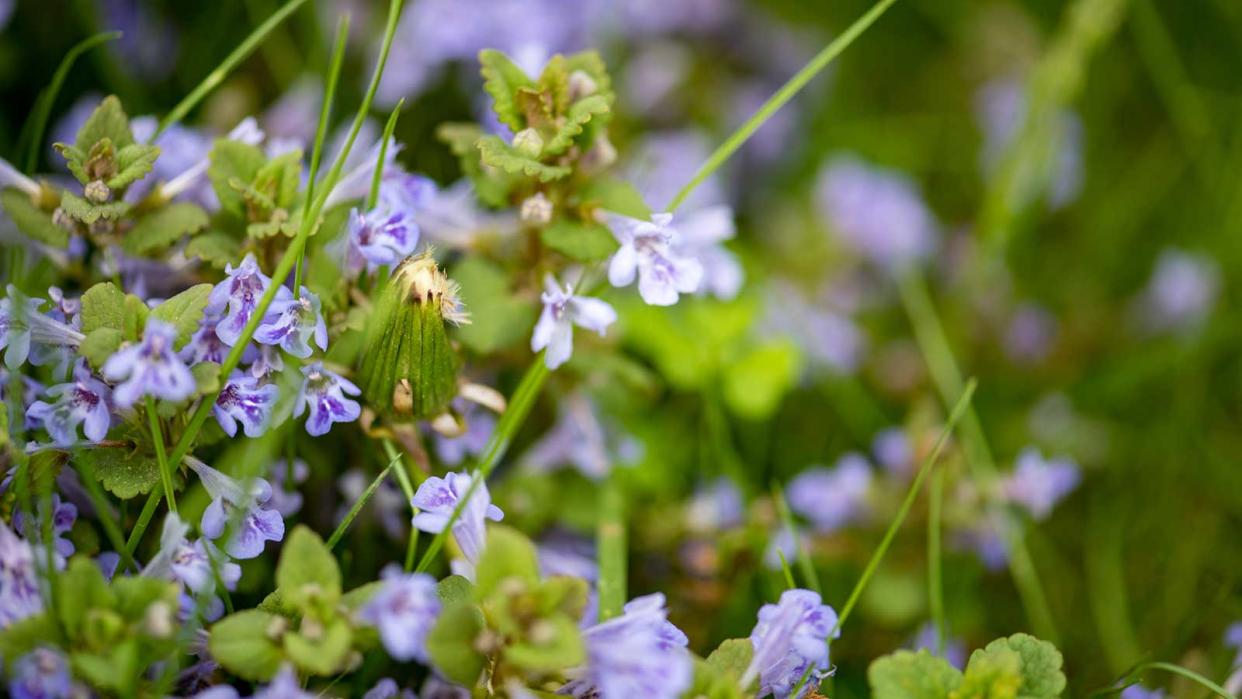
Creeping Charlie, otherwise known as ground ivy or Glechoma hederacea, is a perennial that rapidly spreads throughout lawns and flower beds, taking up nutrients and smothering precious plants.
If you want your garden to thrive, getting rid of this weed is a must. A member of the mint family, it is low-growing and often found in shady areas, as Tom Monson, the Owner of Monson Lawn & Landscaping explains. 'To identify it, the easiest way is to look for the scalloped leaves and the small purple flowers.' These blooms are produced in the spring.
'Creeping Charlie is a very hardy weed and can be difficult to get rid of, so it is important to take a proactive approach,' Tom adds.
6 ways to get rid of creeping Charlie in your outdoor space
Keep your plot free of ground ivy with this advice.
1. Remove creeping Charlie manually
'Creeping Charlie has shallow roots and can be manually removed by hand pulling, especially when the soil is moist,' says Zahid Adnan of The Plant Bible. 'Make sure to wear gloves to protect your hands and remove as much of the plant, including the root system, as possible to prevent regrowth.' It's a bit of a labor of love, but done with a 'little and often' approach, it can be incredibly effective. Plus, it's a good method for a wildlife-friendly garden as there are no chemicals involved.
If you are digging up clumps of creeping Charlie in your lawn, remember to repair the leftover bare patches with seed or sod to discourage it from taking hold again. Regular mowing can also help to tackle creeping Charlie that's growing in lawns and stop it from spreading, adds Richa Kedia of Simplify Plants. 'It will prevent the plant from producing flowers and going to seed.'
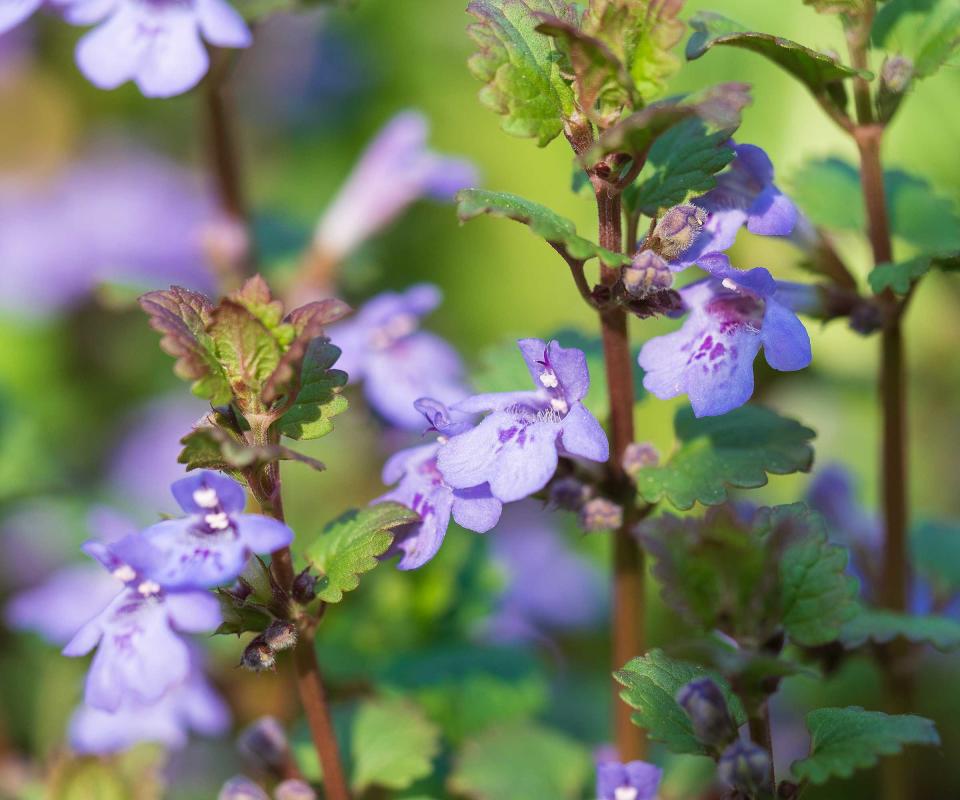
2. Make a homemade weed killer
'I have tried a handful of DIY solutions for getting rid of ground ivy, but the solution that has worked best is a combination of apple cider vinegar, dish soap, and salt,' reveals Jeremy Yamaguchi, the CEO of Lawn Love.
'The amounts that I use are one gallon of apple cider vinegar, one ounce of dish soap, and one tablespoon of salt. The vinegar and salt are the agents that attack the ivy the most (vinegar is a common weed killer and salt is dehydrating), while the soap actually works to improve the vinegar’s effectiveness.'
You can simply mix up this homemade weed killer in a spray bottle and apply it to the weeds. Do take care not to get it on your lawn or other plants that are meant to be in your garden, though – this solution is non-selective and will likely harm them, too.
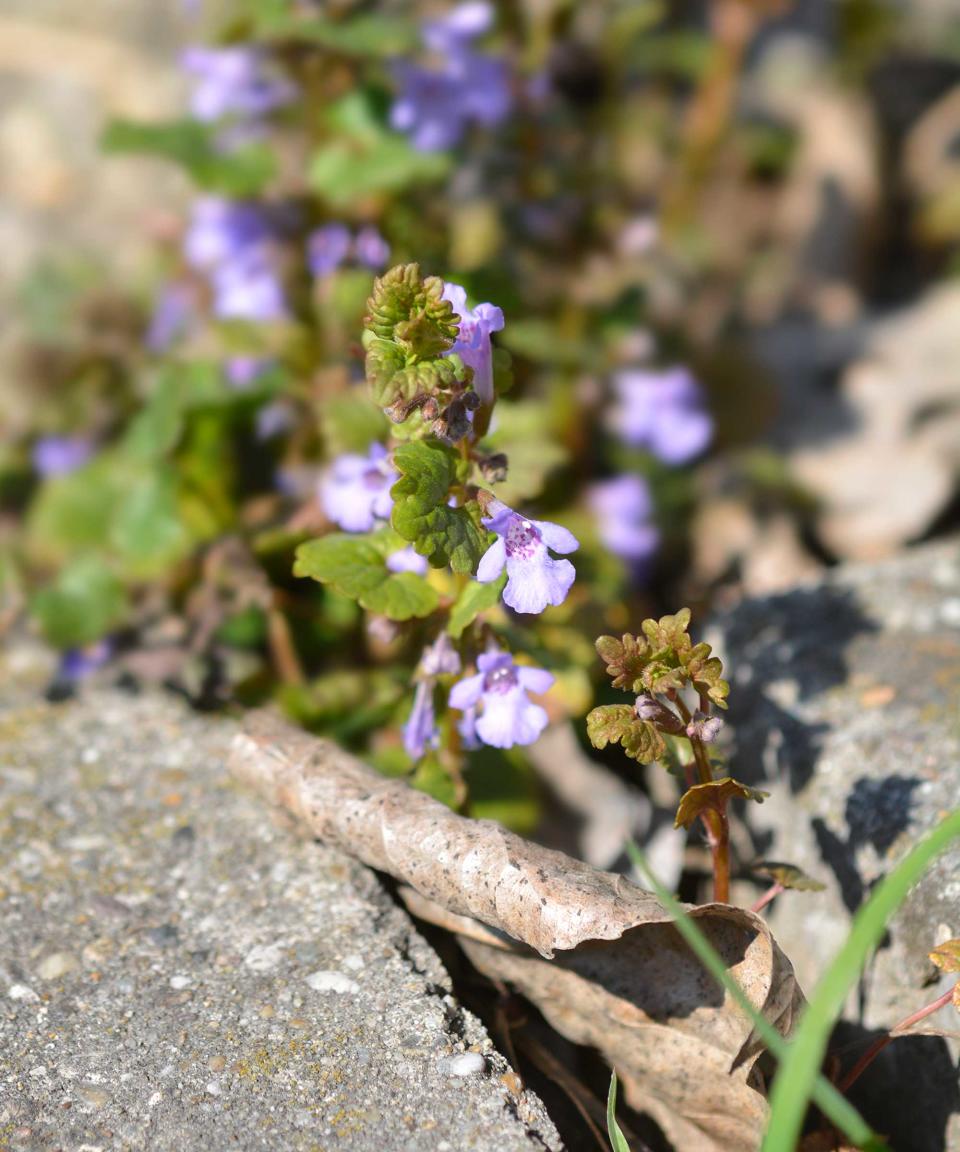
3. Improve your lawn care routine
When it comes to tackling creeping Charlie in lawns, prevention is better than cure, which is where a good lawn care maintenance routine comes in useful.
'Practices that encourage a lush, dense lawn capable of choking out weeds are the first line of defense against creeping Charlie,' says Eric DeBoer, an agronomist with Simple Lawn Solutions.
He advises fertilizing and properly watering your lawn, along with increasing sun exposure, as this weed grows best in shade. Mowing at the proper height by avoiding removing more than 1/3rd of the length of the grass blades at a time will also reduce stress, he adds, and result in a healthier lawn.
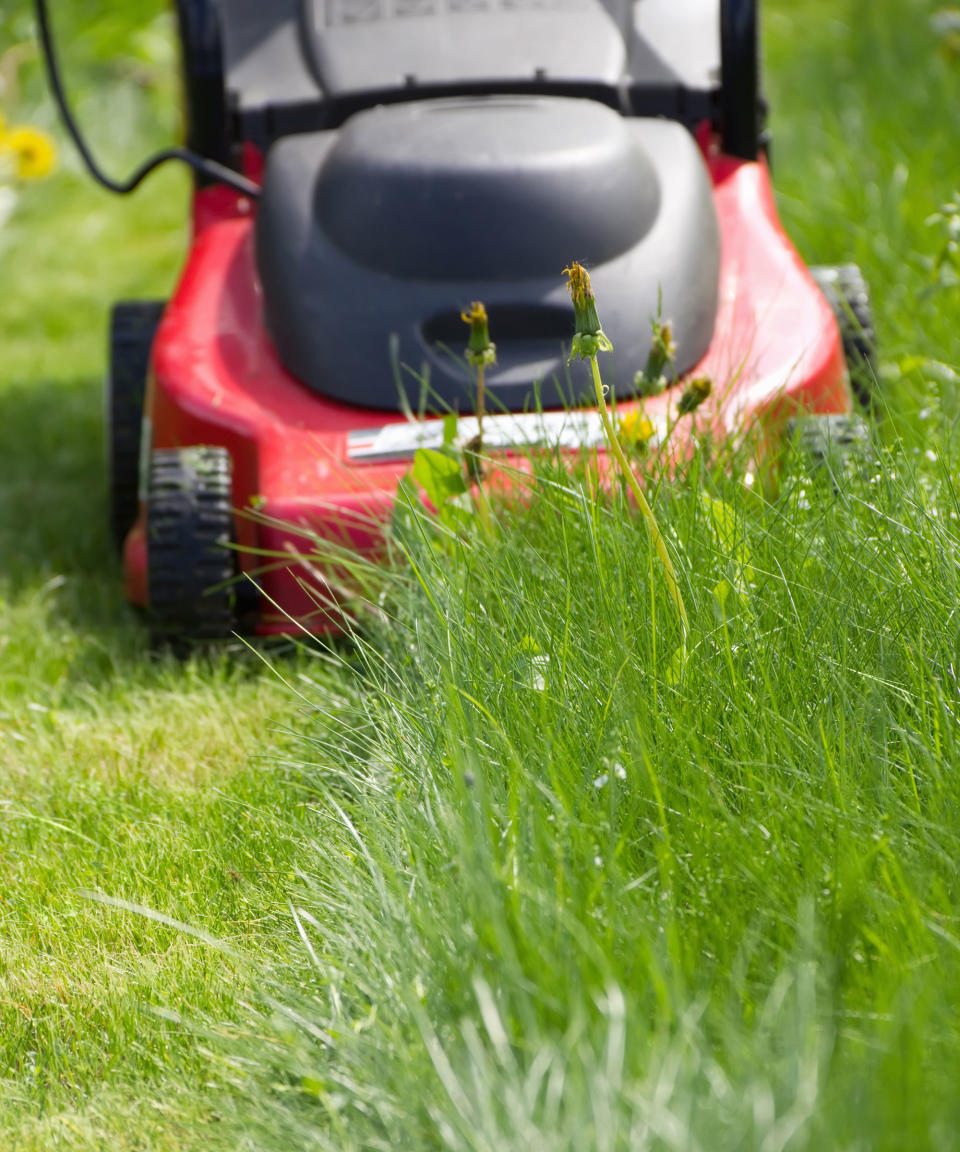
4. Apply a mulch
'Mulching can help suppress the growth of creeping Charlie by blocking sunlight and inhibiting its ability to spread,' recommends Zahid. 'Apply a layer of thick organic mulch, such as wood chips or straw, over the affected area to smother the weed.'
You can also smother these weeds with landscaping fabric, such as ECOgardener Premium 5oz Weed Barrier Landscape Fabric from Amazon. You can then cover it with bark chippings, and perhaps some potted plants, to disguise it in your yard. A thick layer of cardboard or several layers of newspaper covered with organic mulch or soil can also be effective, as Zahid advises.
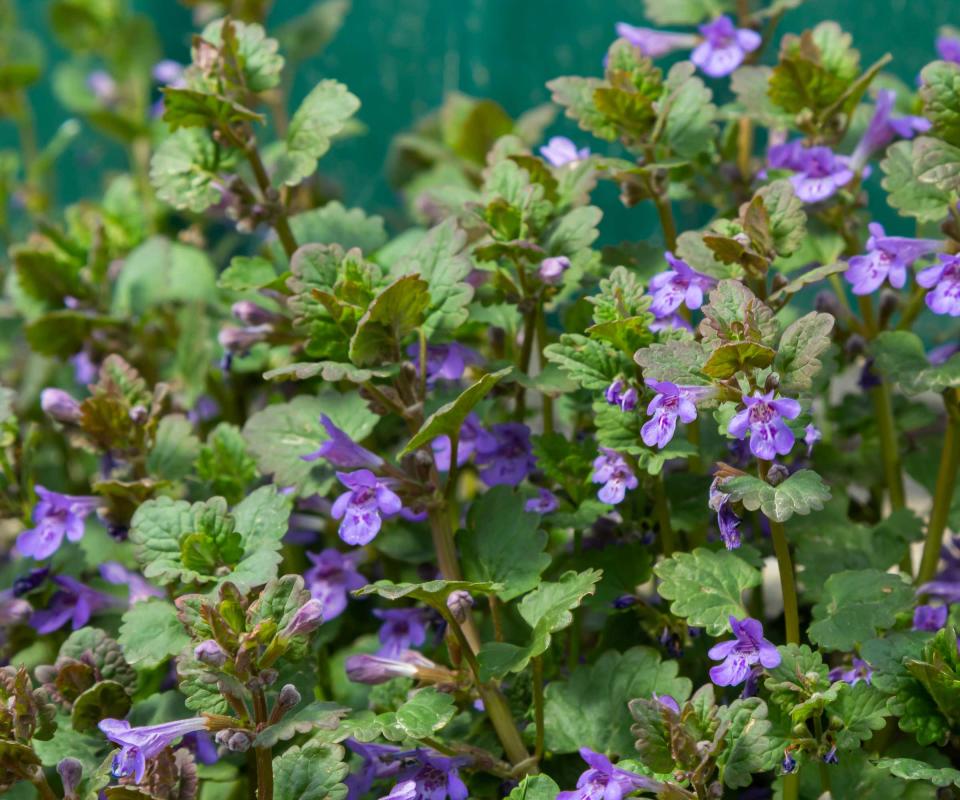
5. Plant ground cover plants
'Planting ground covers can also help prevent creeping Charlie from taking over your garden,' says Becky Decker of Gardeninghood.com.
She suggests planting creeping thyme (which has fragrant foliage and pretty flowers) or ajuga with its blue-purple blooms. 'These plants will help fill in empty spaces and prevent weeds from taking hold.'
6. Use a herbicide
If the above methods don't seem to be doing the job, you could look for selective herbicides that are specifically formulated to kill this weed without harming your plants.
'The most effective herbicide is the active ingredient triclopyr,' Eric says. He suggests using it in the fall. Hi-Yield Triclopyr Ester, available from Amazon, is designed for tackling creeping Charlie in lawns. Always follow application instructions carefully and wear protective clothing.
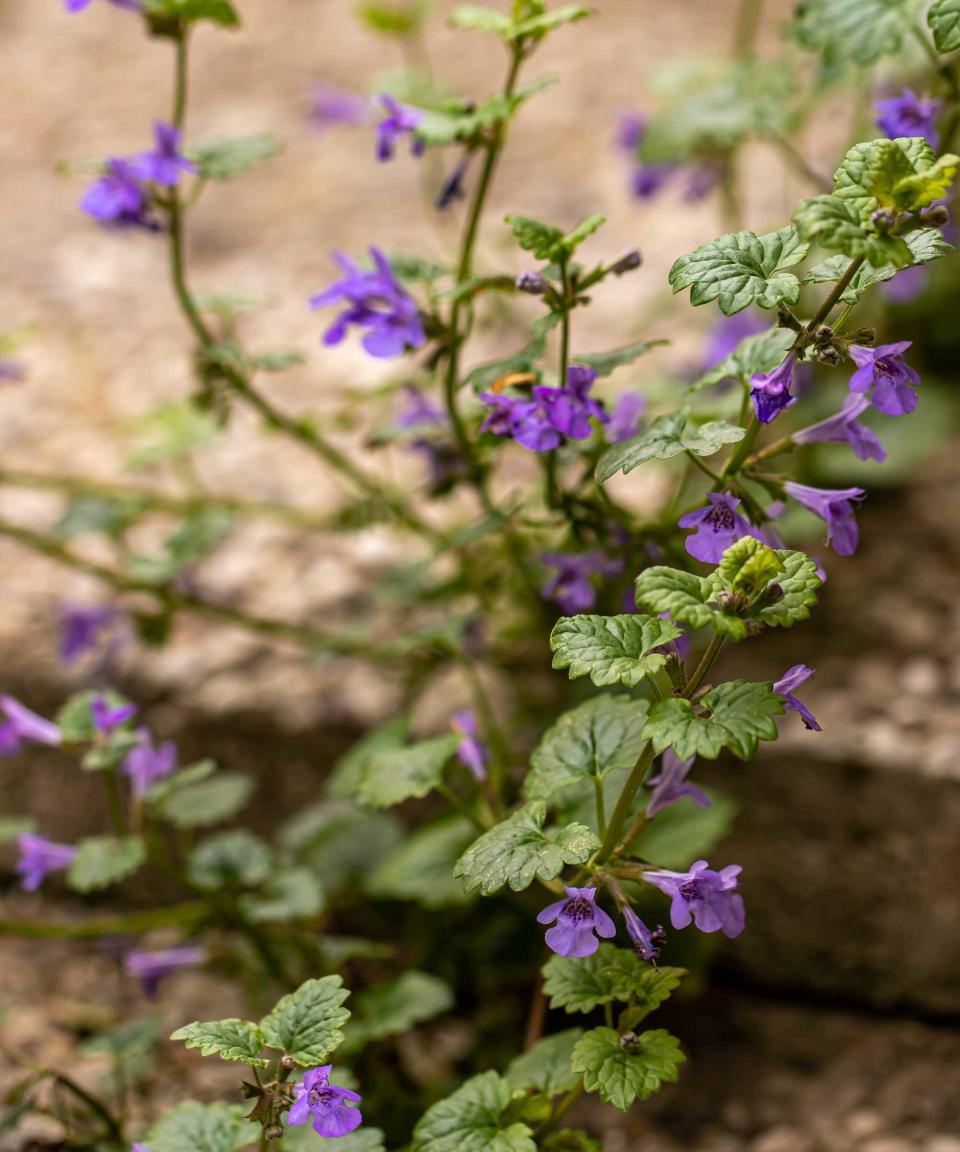
From dandelions to crabgrass, there is a world of weeds out there which can prove a pain to gardeners. But the best way to tackle the majority of them, creeping Charlie included, is to monitor your yard regularly and take action quickly if you spot them.
And even if you've removed all the creeping Charlie you can see, bear in mind that this persistent plant can come back. 'Regular maintenance, such as hand pulling, mowing, and mulching, should be continued to prevent the weed from spreading and reestablishing,' says Zahid.

